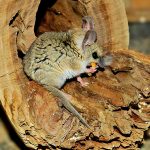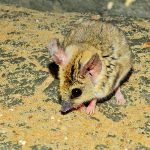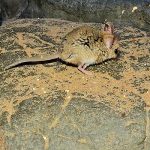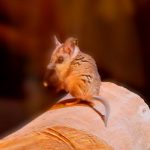JULIA CREEK DUNNART
Discovering the Julia Creek Dunnart
The Julia Creek Dunnart, named for the small town of Julia Creek in Queensland, is a remarkable little marsupial that inhabits the sweeping grasslands of Australia’s north-west. While it might be easy to mistake this tiny animal for a mouse at first glance, a closer look reveals many fascinating features that set it apart.
Appearance and Adaptations
With a slender body clothed in soft, greyish-brown fur, the Julia Creek Dunnart blends seamlessly into the pale, straw-coloured grasses of its environment. Its lighter, cream-coloured belly helps to mask its presence from predators beneath. Particularly striking are its large, rounded ears and shining, beady eyes – adaptations that grant the Dunnart superb hearing and vision for its nightly activities.
- Large Rounded Ears: These not only give excellent hearing but also help dissipate heat on warm nights.
- Beady Eyes: Specially adapted for night vision, perfect for spotting prey in darkness.
Habitat and Range
This dunnart can be found mainly in the Mitchell Grass Downs of north-western Queensland. It seeks refuge in open, windswept grasslands and sparsely vegetated plains, which offer both shelter and a hunting ground.
| Region | Habitat Type |
|---|---|
| North-western Queensland | Mitchell Grass Downs |
- Habitat Specificity: Being tied so closely to natural grasslands, changes to this environment can have swift impacts on their population.
Diet and Predatory Skills
The Julia Creek Dunnart is an insectivore, relying on insects and other invertebrates for sustenance. Agile and swift, it hunts using its sharp senses and needle-like teeth.
- Diet Includes: Beetles, spiders, grasshoppers, and sometimes very small vertebrates.
- Ecological Role: Plays an active role in regulating insect populations and supporting grassland health.
Breeding and Life Cycle
Breeding takes place during the wetter months, from November to April. The Julia Creek Dunnart follows a classic marsupial pattern: after a brief gestation, the tiny young are born and crawl into the pouch to develop further.
- Gestation: Very short (around 13 days).
- Pouch Life: Young remain attached to teats for several weeks.
- Nest Phase: After outgrowing the pouch, the juveniles nest until independent.
- Reproduction: Females may raise more than one litter annually if conditions allow.
Interesting Facts
- Tail as a Reserve: The dunnart’s tail can store fat, swelling noticeably when food is abundant – much like a tiny, living pantry.
- Silent Lifestyle: While generally quiet, the Julia Creek Dunnart can produce soft, high-pitched squeaks, usually as alarm calls or when communicating with young. Most of these sounds are outside the range of human hearing.
- Brief Yet Dynamic Life: Their average lifespan in the wild is just around two years, a reflection of their small size and many dangers they face.
Conservation Status and Challenges Conservation Listing: Vulnerable under Australian law.
| Main Threats | Conservation Response |
|---|---|
| Habitat loss (farming, grazing) | Habitat protection, land management |
| Invasive predators (cats, foxes) | Predator control, research and monitoring |
| Weed invasion | Restoration of native grasses |
- Ongoing Conservation: Protection of native grasslands and the careful management of agricultural expansion and invasive species are crucial to the Dunnart’s survival.
Embracing Conservation through Understanding
The Julia Creek Dunnart may appear fragile against the vastness of the outback, but it plays a vital role in the grassland ecosystem. By learning about this charming marsupial and the challenges it faces, we can foster a deeper connection with Australia’s unique wildlife and inspire efforts to preserve its delicate habitat for generations to come.Through respect, appreciation, and responsible stewardship, the future of the Julia Creek Dunnart remains hopeful — a small symbol of the wild, resilient heart of Australia.




